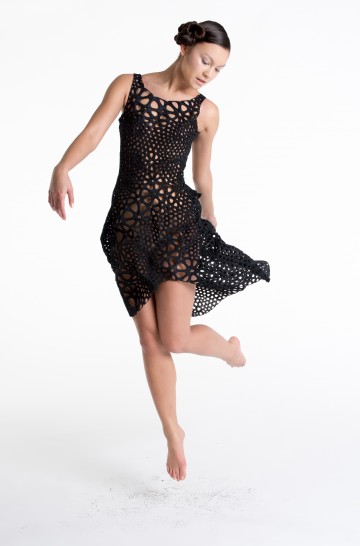
“ This dress is a revolution: it is fabric without fiber and an entire garment without assembly or sewing.”
For all the talk of wearables and their infinite potential to
revolutionize your style game, innovation on that front has so far
amounted to 1) fitness trackers, 2) watches of dubious utility and 3)
gimmicky eyewear that cries out for punches to the face. While the
fitness trackers are a welcome addition to the mainstream tech arsenal,
the latter two serve mostly to tether us even more closely to the
smartphones and social networks we’re already a bit fed up with in our
daily lives. Nobody doubts that wearables will progress beyond their
awkward current half-baked incarnations, but the jury’s still out on the
sort of bionic hyperconnectivity they’ll bring.
Existential crises aside, innovations that In particular, we’ve
become increasingly captivated by the near-future potential
for textiles: nanotech garments capable of improving ambient air
quality, fibers stronger than kevlar and fabrics that warm and cool to
balmy perfection in any weather. These are are no longer the stuff of
myth and thanks to their quantum gains in performance (rather than just
as means of improving connectivity), new textiles seem far more likely
to meaningfully impact runway fashion over the next few years. Still,
despite revolutions in chemical composition and manufacturing processes,
the fundamental mechanics of textiles have remained unchanged: fibers
are woven, knitted or tangled up like felt to make flat fabrics that are
then draped, sewn and otherwise assembled into garments.
Enter the Kinematics Dress, the world’s first 3D printed dress and a product of the genius revolutionaries at Nervous System.
Drawing on the logic of biological systems and ever more
complex architectural forms, they have developed an system with the help
of the Open Dynamics Engine able
to generate a 3D-print ready document from a body scan and some quick
modifications. Thanks also to an ingenious technique billed
“computational folding” — the entire garment is digitally balled up to
fit the working confines of the printer — it can be be printed as a
single piece and then unfolded after printing
source: needsupply.com
No comments:
Post a Comment